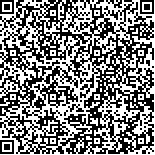| 引用本文: | 高燕,吕凌,翟阳,贾明倩,赵渤年,宋勇.网络药理学联合灰色关联分析黄芩抗呼吸道合胞病毒小鼠肺炎的药效物质基础研究[J].中国现代应用药学,2023,40(15):2056-2063. |
| GAO Yan,LYU Ling,ZHAI Yang,JIA Mingqian,ZHAO Bonian,SONG Yong.Pharmacodynamic and Material Basis of Scutellaria Baicalensis Against Respiratory Syncytial Virus Pneumonia in Mice by Network Pharmacology Combined with Grey Relational Analysis[J].Chin J Mod Appl Pharm(中国现代应用药学),2023,40(15):2056-2063. |
|
| 本文已被:浏览 1473次 下载 967次 |

码上扫一扫! |
|
|
| 网络药理学联合灰色关联分析黄芩抗呼吸道合胞病毒小鼠肺炎的药效物质基础研究 |
|
高燕1, 吕凌2, 翟阳3, 贾明倩1, 赵渤年1, 宋勇4
|
|
1.山东中医药大学, 济南 250355;2.山东省红十字会备灾救护中心, 济南 250014;3.山东省肿瘤医院, 济南 250117;4.东营市疾病预防控制中心, 山东 东营 257092
|
|
| 摘要: |
| 目的 探讨黄芩抗呼吸道合胞病毒(respiratory syncytial virus,RSV)的药效物质基础。方法 运用网络药理学分析黄芩抗RSV的作用靶点;UPLC-QTOF-MS/MS定量表征黄芩的共有成分,建立RSV肺炎小鼠模型,检测小鼠体质量、肺指数、肺部病理切片以及IL-6的含量,采用灰色关联度方法对50批次黄芩样品谱-效数据进行关联分析,挖掘黄芩抗RSV肺炎小鼠的有效成分。结果 蛋白互作网络结果确定黄芩抗RSV核心靶点为AKT1、IL-6、TNF、MAPK3、SRC、HSP90AA1、PTGS2;整体动物实验证明,黄芩可不同程度地下调肺指数及炎性因子IL-6含量;灰色关联度分析显示黄芩中抗RSV的化学成分主要为黄酮苷类成分。结论 采用网络药理学方法确定药效靶点,灰色关联度分析成分-靶标数据,挖掘药效物质基础的方法可行,黄芩苷、汉黄芩苷、白杨素-6-C-阿拉伯糖-8-C-葡萄糖苷、白杨素-6-C-阿拉伯糖-8-C-阿拉伯糖苷、白杨素-7-O-葡萄糖醛酸苷等黄酮苷类成分可作为黄芩的Q-Markers用于质量评价。 |
| 关键词: 黄芩 呼吸道合胞病毒 网络药理学 Q-Markers 药效物质基础 灰色关联度分析 |
| DOI:10.13748/j.cnki.issn1007-7693.20221591 |
| 分类号:R966 |
| 基金项目:国家重点研发计划项目(2017YFC1701501);山东省重点研发计划(2017CXGC1306,2016GSF202005,2021CXGC010511) |
|
| Pharmacodynamic and Material Basis of Scutellaria Baicalensis Against Respiratory Syncytial Virus Pneumonia in Mice by Network Pharmacology Combined with Grey Relational Analysis |
|
GAO Yan1, LYU Ling2, ZHAI Yang3, JIA Mingqian1, ZHAO Bonian1, SONG Yong4
|
|
1.Shandong University of Traditional Chinese Medicine, Jinan 250355, China;2.Shandong Red Cross Disaster Preparedness and Rescue Center, Jinan 250014, China;3.Shandong Cancer Hospital, Jinan 250117, China;4.Dongying Center for Disease Control and Prevention, Dongying 257092, China
|
| Abstract: |
| OBJECTIVE To explore the anti-respiratory syncytial virus(RSV) pharmacodynamic material basis of Scutellaria Baicalensis. METHODS Network pharmacology method was used to analyze the anti-RSV targets of Scutellaria baicalensis. UPLC-QTOF-MS/MS was used to characterize the consensus components in Scutellaria Baicalensis. A mouse model of RSV pneumonia was established, and the changes of mouse body weight, lung index, lung pathological sections and IL-6 were detected. The gray correlation method was used to analyze the spectrum-effect data of 50 batches of Scutellaria baicalensis samples, and the effective components of Scutellaria baicalensis against RSV pneumonia mice were mined. RESULTS The protein-protein interaction network results determined that the core targets of Scutellaria baicalensis against RSV were AKT1, IL-6, TNF, MAPK3, SRC, HSP90AA1 and PTGS2; overall animal experiment proved that lung index of Scutellaria baicalensis decreased to varying degrees, and the inflammatory factor IL-6 had significant differences; grey correlation analysis showed that the anti-RSV chemical components in Scutellaria baicalensis were mainly flavonoid glycosides.CONCLUSION Using the network pharmacology method to determine the pharmacodynamic target, the gray correlation degree analysis component-target data, the method of mining the pharmacodynamic material basis is feasible, baicalin, wogonin, chrysin-6-C-arabinose-8-C-flavonoid glycoside, chrysin-6-C-arabinose-8-C-arabinoside and chrysin-7-O-glucuronide can be used as Q-Markers of Scutellaria baicalensis for quality evaluation. |
| Key words: Scutellaria Baicalensis respiratory syncytial virus network pharmacology Q-Markers pharmacodynamic material basis grey relational analysis |
